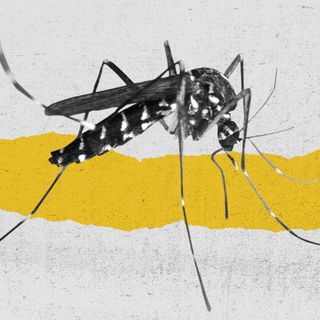A new study of fossilized leaves from the remains of a 23 million-year-old forest, hints at how plant life could adapt to rising carbon dioxide levels in the atmosphere.
Published in the peer-reviewed journalClimate of the Past, the study examined well-preserved, mummified leaves from the early Miocene epoch, retrieved from a lake bed in New Zealand’s South Island. The period that the leaves belong to is believed to have been characterized by high temperatures, and high levels of carbon dioxide in the atmosphere. Using leaf gas-exchange modeling on the fossilized leaves, the researchers were able to see how these plants were able to harvest carbon dioxide more efficiently for photosynthesis — and, as we are about to reach similar levels of atmospheric carbon dioxide, scientists believe this could hold provide helpful insights into the future of plant life.
However, scientists have been debating the levels of carbon dioxide in the atmosphere during the early Miocene epoch. But these fossilized leaves have some answers — even the microscopic veins and stomata of these leaves are perfectly preserved for the scientists to study. “Evidence has been building that CO2 was high then, but there have been paradoxes… [But] the amazing thing is that these leaves are basically mummified, so we have their original chemical compositions, and can see all their fine features under a microscope,” Tammo Reichgelt, a paleobotanist from the University of Connecticut, who is also the lead author of the study, said.
Related on The Swaddle:
Fossil Footprints Found In South Korea Show Ancient Crocodile May Have Run on Two Legs
Analyzing the different chemical forms of carbon within leaves from six tree species retrieved from the site, scientists were able to estimate that the carbon content of the atmosphere during the Miocene epoch was 450 to 550 parts per million — at present, they’re at 415 parts per million, and we’re headed towards early Miocene levels. Further, interestingly, the researchers also found, after studying the geometry of the leaves’ stomata, that in this world with high atmospheric carbon, the plants were “unusually efficient” at sucking in carbon dioxide through the stomata, which is the carbon fertilization effect that suggests that increase of carbon dioxide in the atmosphere, increases the rate of photosynthesis in plants. “Studies have shown that plants acclimatize, or adjust, to rising carbon dioxide concentration and the fertilization effect diminishes over time,” Dr. Philippe Ciais, associate director of the Laboratory of Climate and Environmental Sciences, Gif-suv-Yvette, France, had said in 2016.
In fact, a 2010 study published in Nature Earth and Environment had suggested that the carbon fertilization effect is leading to “global greening.” Experts believe that when crops photosynthesize more rapidly, they absorb relatively less calcium, iron, zinc, and other minerals vital for our nutrition — and eating food that lacks nutrients can make us vulnerable to a range of diseases and infections. Moreover, as Reichgelt explained, given that most of today’s plants have developed in a low-carbon dioxide atmosphere, we can’t be entirely certain that all the plants in existence will be able to adapt.
“How it plays out is anyone’s guess. It’s another layer of stress for plants. It might be great for some, and horrible for others,” Reichgelt noted.




